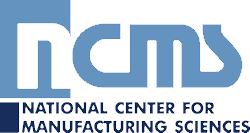TRI Form R Reporting Threshold Determinations for Manufactured Metal Compounds in Plating Baths
The Environmental Protection Agency (EPA) recently acted to enforce the reporting obligation contained in Section 313 of the Emergency Planning and Community Right-to-Know Act of 1986 (EPCRA) that applies to surface finishing processes. Section 313 of EPCRA, and EPA’s implementing regulations at 40 C.F.R. §§ 372.22 and 372.30, require the owner or operator of a facility that manufactures, processes or otherwise uses a toxic chemical in an amount exceeding an applicable threshold quantity of that chemical during a calendar year to report releases of listed hazardous substances. If a facility is required to report such releases, a toxic release inventory (TRI) Form R must be submitted to EPA and to the state.
In the surface finishing process intermediate compounds are coincidentally manufactured as the metal is brought into solution. For example, copper, nickel, zinc and chromium compounds are being formed and unformed through the chemical reactions in the plating bath. These manufactured metal compounds must be calculated to determine the amount of chemical compounds that are manufactured, processed or otherwise used for threshold reporting levels.
These chemical reactions and the compounds formed are documented in plating manuals, but may be overlooked in the threshold calculations for Form R reporting. NASF has provided guidance on the reporting of manufactured metal compounds and has other tools to assist facilities with this reporting obligation. In addition, NASF recently hosted a webinar presented by Joelie Zak of Scientific Control Laboratories on the reporting of manufactured metal compounds. The webinar is available through the NASF website. For more information on this topic, contact Matt Martz with NASF at mmartz@nasf.org.
GuideMe. This EPA TRI resource provides useful Q&A regarding the topic of manufactured metal compounds.

